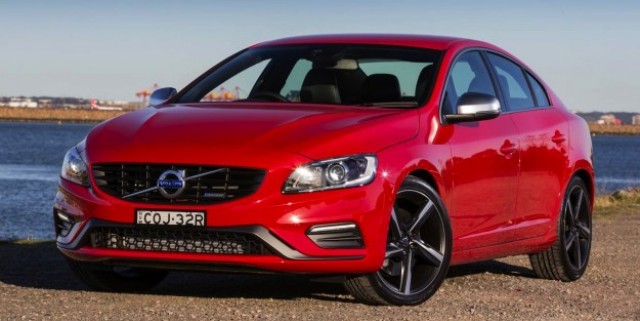
The updated high-performance Volvo S60 T6 due next year with an all-new twin-charged petrol engine will be faster than the current model as well as almost 40 per cent more fuel efficient.
The Swedish car maker says the Volvo S60 equipped with its new turbocharged and supercharged 228kW/400Nm 2.0-litre four-cylinder T6 engine will become the first car in its class to deliver more than 2hp (1.5kW) per gram of CO2 from a combustion engine only.
Those figures confirm the S60 T6 will emit less than 153g/km CO2 on average when paired with Volvo’s new eight-speed automatic transmission, which approximately translates to combined cycle fuel consumption of no worse than 6.4 litres per 100km.
Currently, the 224kW/440Nm and 242kW/480Nm tunes of the existing turbocharged 3.0-litre inline-six petrol engine in the S60 T6 emit 243g/km CO2 and consume 10.2L/100km on the combined cycle, making the new engine 37 per cent more efficient than its predecessor.
Front-wheel-drive variants of the updated Volvo S60 T6 will also accelerate from 0-100km/h in 5.9 seconds, making them two-tenths faster than the current car.
Those figures put the Volvo largely on par with the turbocharged 2.0-litre four-cylinder BMW 328i, which, though less powerful at 180kW/350Nm, claims an identical 5.9sec sprint time and combined cycle fuel consumption of 6.3L/100km.
The car maker says the updated S60 and V60 with the new 135kW/400Nm 2.0-litre four-cylinder D4 diesel engine are the first cars with this level of power in their class with CO2 emissions under 100g/km.
Paired with a six-speed manual transmission, both the S60 D4 and V60 D4 emit an average of 99g/km, translating to combined cycle fuel consumption of approximately 3.8L/100km.
The D4 engine is already available in Europe in the updated S60, V60, XC60, V70, XC70 and S80 models, and can also be ordered with the eight-speed automatic.
The first wave of Volvo’s new Drive-E engines is expected in Australia around March 2014.





